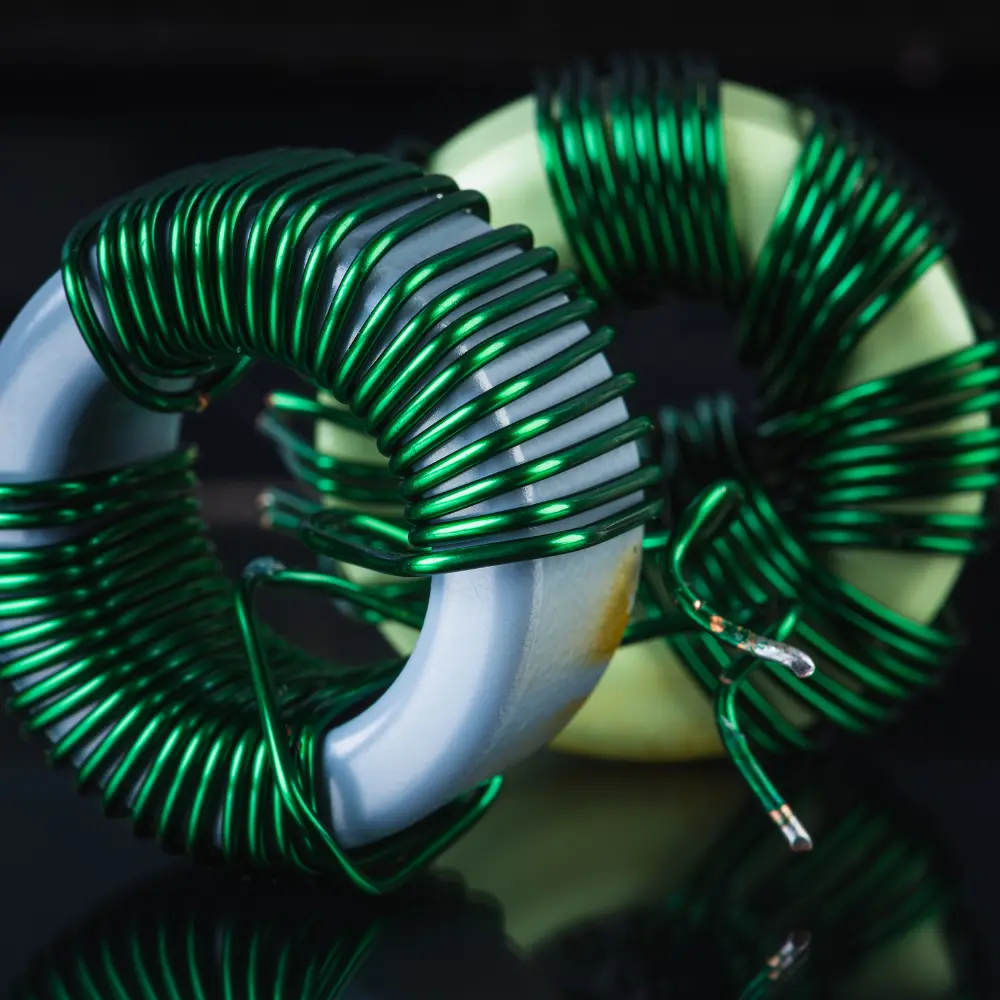Toroidal transformers, or toroids, mark a significant leap in electrical engineering and offer unique efficiency, size, and performance advantages. Their design is crucial to their effectiveness, especially in managing high and low voltage. Understanding this relationship within toroidal transformers unveils how their design maximizes efficiency and reliability, enlightening us about this innovative technology.
High Voltage in Toroidal Transformers: Efficiency and Design
 Toroidal transformers are highly efficient in high-voltage applications and central to their performance. High voltage reduces energy loss during electricity transmission over long distances. Toroidal transformers, with their continuous steel strip core wound into a doughnut shape, excel in managing high voltage efficiently due to their gapless construction. This design minimizes core losses, which are typically higher in conventional transformers due to the presence of air gaps in the core.
Toroidal transformers are highly efficient in high-voltage applications and central to their performance. High voltage reduces energy loss during electricity transmission over long distances. Toroidal transformers, with their continuous steel strip core wound into a doughnut shape, excel in managing high voltage efficiently due to their gapless construction. This design minimizes core losses, which are typically higher in conventional transformers due to the presence of air gaps in the core.
The toroid shape allows the magnetic flux to circulate more smoothly and with less resistance, which is particularly advantageous at high voltages. The absence of air gaps reduces the magnetizing current needed to operate the transformer, thereby reducing the overall energy loss. This makes toroidal transformers ideal for high-voltage applications, such as power distribution systems, where maintaining high efficiency is crucial.
The design also includes robust insulation and electrostatic shielding to handle the high-voltage stress effectively. These features ensure the transformer can operate safely and efficiently under high-voltage conditions, preventing breakdowns and prolonging its lifespan.
Low Voltage in Toroids: Complementing Efficiency
While toroidal transformers are optimized for high voltage, their performance at low voltage is equally essential. After electricity is transmitted at high voltage, it must be stepped down to a lower voltage suitable for end-use applications. Toroidal transformers handle this transition with remarkable efficiency.
The low-voltage windings in toroidal transformers complement the high-voltage windings by maintaining high efficiency throughout the step-down process. The same gapless core design that benefits high-voltage applications also enhances low-voltage performance. The toroidal design minimizes resistive losses and improves energy transfer efficiency at lower voltages by reducing the number of turns needed in the winding.
Additionally, toroidal transformers’ compact size, made possible by their unique core design, allows them to fit into small spaces while still delivering high performance. This makes them particularly useful in limited space, but reliability and efficiency cannot be compromised.
The Integrated Efficiency of Toroidal Transformers
The true strength of toroidal transformers lies in their ability to integrate high and low-voltage efficiency into a single, compact unit. The same design principles that enhance high-voltage performance—such as the continuous, gapless core—also benefit low-voltage applications. This integration ensures that toroidal transformers can deliver electricity efficiently across various voltages, making them versatile and highly effective in multiple applications, instilling confidence in their adaptability.
Toroidal transformers are not just about improving efficiency at one voltage level; they are about optimizing the electrical process from high to low voltage. This holistic approach to transformer design sets toroidal transformers apart from conventional transformers, making them a superior choice when high efficiency and compact design are required.
Toroidal transformers’ efficiency in handling both high and low voltage is a testament to their advanced design. By optimizing the magnetic flux path and minimizing losses, toroidal transformers ensure that electricity is transmitted and used with the highest possible efficiency. This reliability makes them indispensable in modern electrical systems, where the demand for reliable and efficient energy solutions grows, providing a sense of security in their use.

